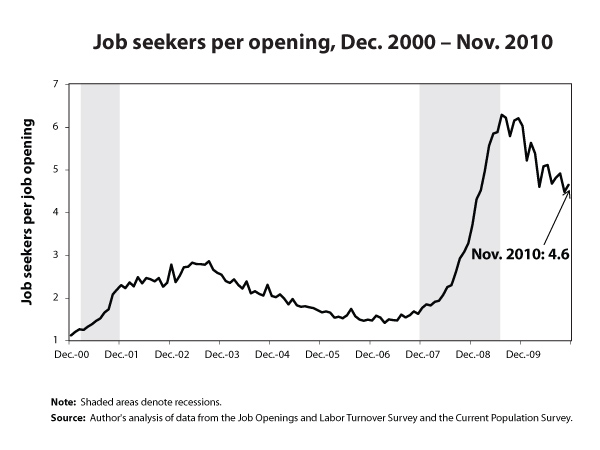No jobs for more than three out of four unemployed workers
By Heidi Shierholz
January 11, 2011
This morning the Bureau of Labor Statistics released a discouraging November report from the Job Openings and Labor Turnover Survey (JOLTS), showing that job openings decreased by 80,000 in November, while revisions to earlier data reveal that there were 34,000 fewer job openings in October than previously reported. The survey also showed other signs of weakness in November, as hires declined by 39,000, layoffs increased by 36,000, and quits decreased by 44,000. The report underscores the rocky nature of the recovery.
The total number of job openings in November was 3.25 million, while the total number of unemployed workers was 15.0 million (the latter is from the Current Population Survey). The ratio of unemployed workers to job openings was thus 4.6-to-1 in November, a deterioration from the revised October ratio of 4.5-to-1. Despite November’s lapse, the job-seeker’s ratio has been generally improving since its peak of 6.3-to-1 in July 2009. However, at 4.6-to-1 the ratio is more than three times its 2007 average of 1.5-to-1.

It is important to note that the job-seekers ratio does not measure the number of applicants for each job. There may be many applicants for every job posting, since job seekers apply for multiple jobs. Instead, the 4.6-to-1 ratio means that for every 4.6 unemployed workers, there is only one job available — or for more than three out of four unemployed workers, there simply are no jobs. Furthermore, when calculating the ratio of job seekers to job openings, if we were to include not just the 15.0 million unemployed workers, but also the 9.0 million “involuntarily part-time” workers (part-time workers who want and are available for a full-time job, and are therefore likely job searching), the ratio would be 7.4-to-one.
—Research assistance by Kathryn Edwards
